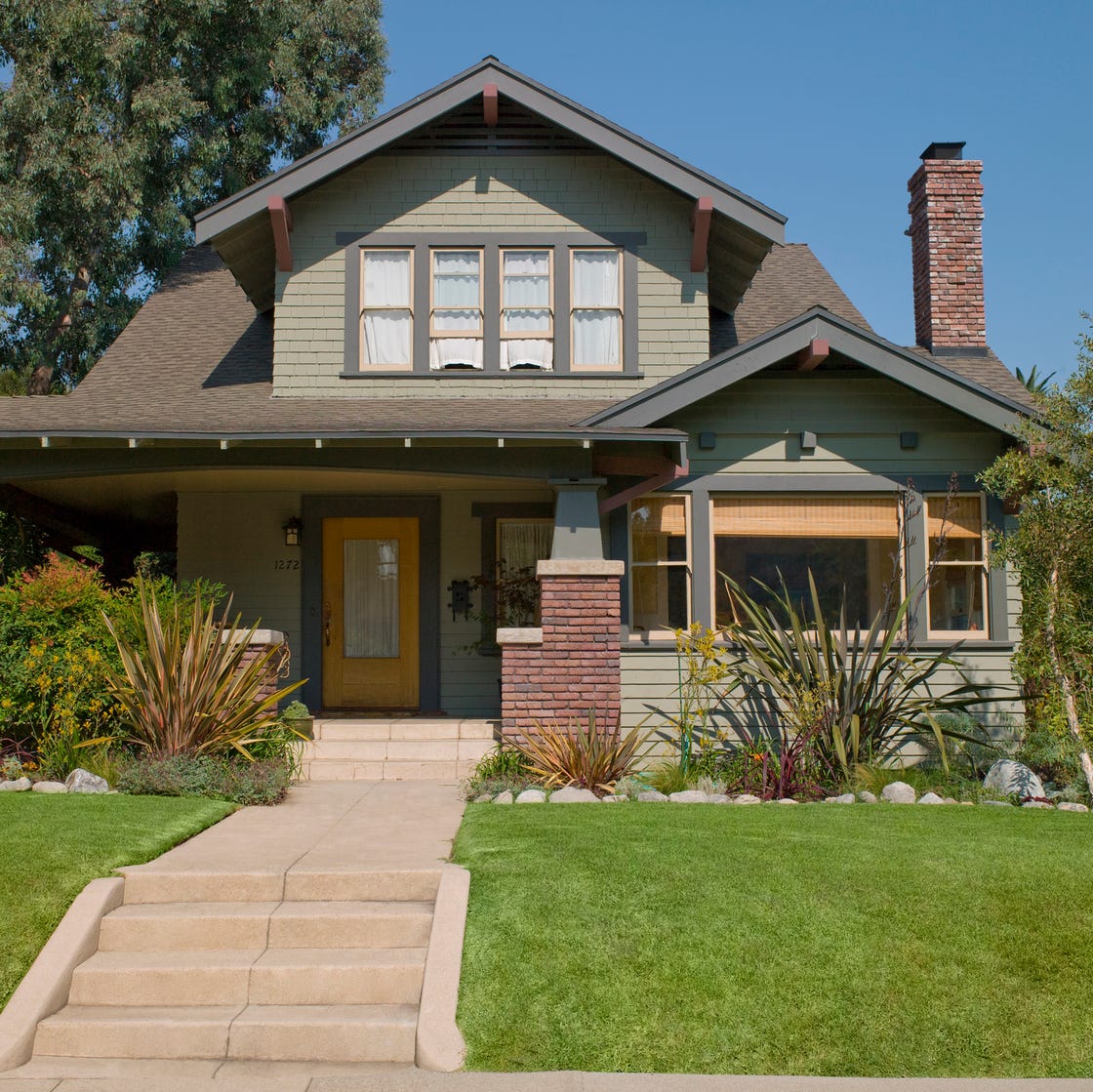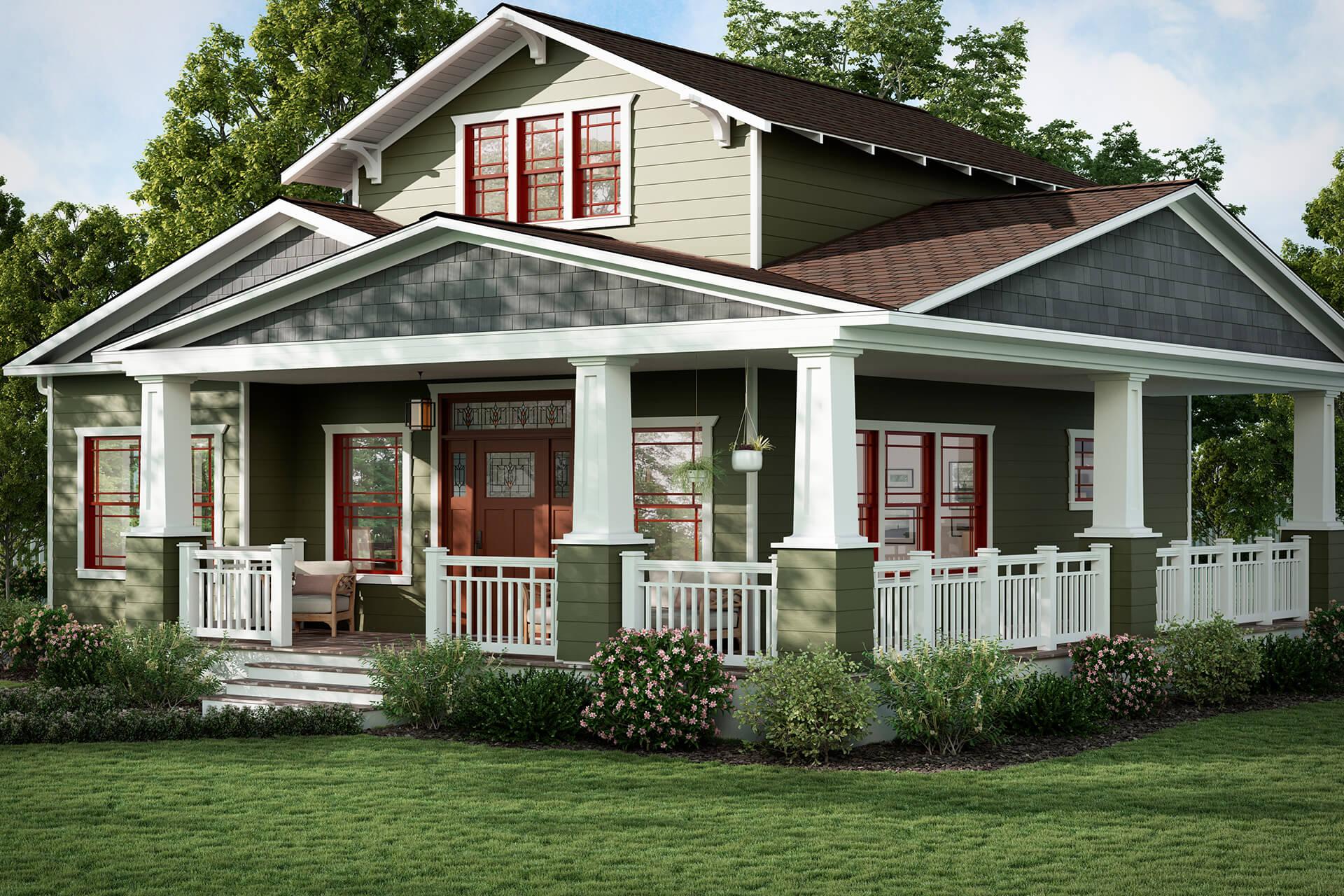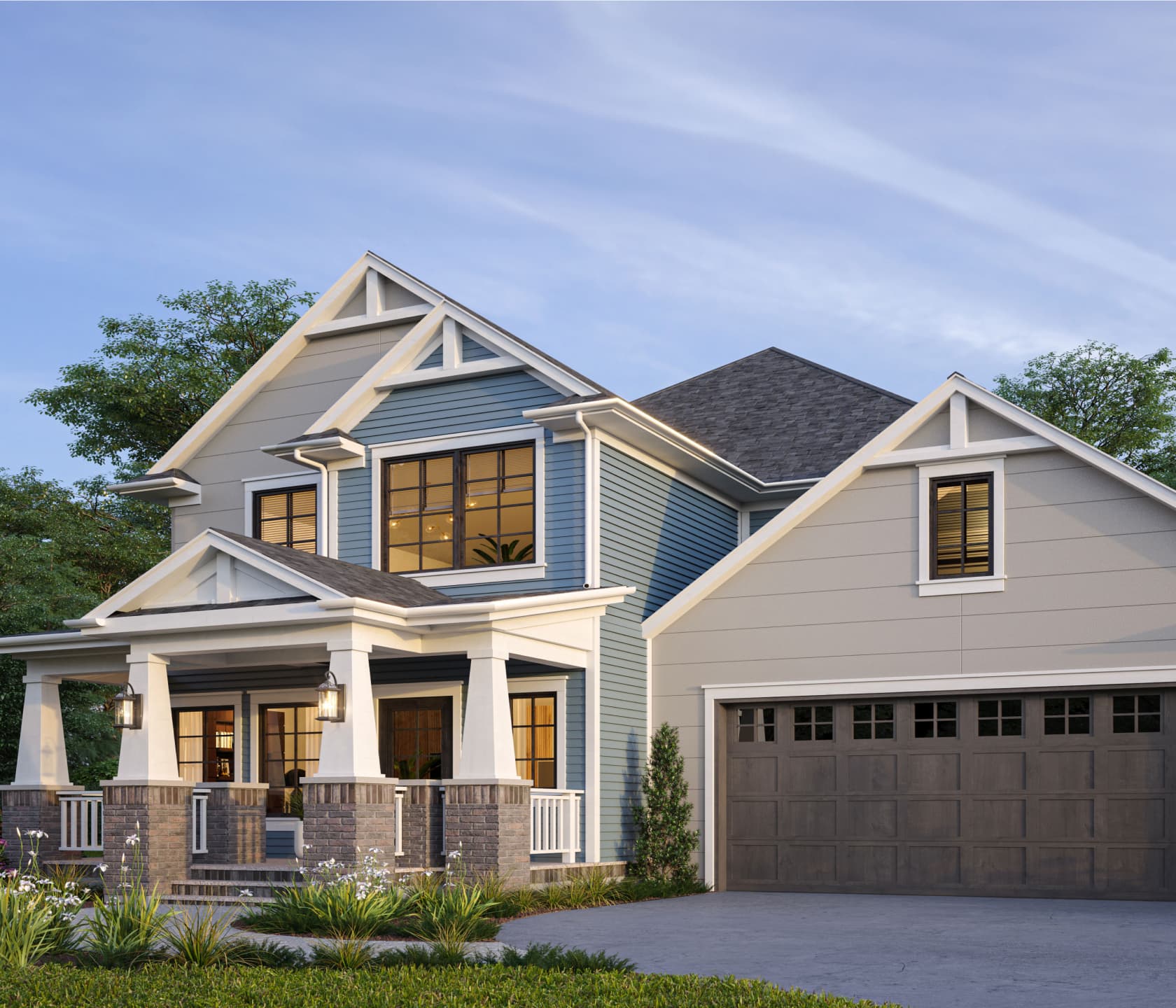The Function of Arts & & Crafts Architects in Elevating Architectural Solutions in Residential Style
Arts and Crafts architects considerably affect domestic design via their dedication to workmanship and sustainability. They focus on handmade details and natural materials, which enhance both visual appeals and area identification. By involving customers in the layout procedure, these architects create distinct living rooms that reverberate with personal preferences. This method raises inquiries about the future trajectory of residential architecture and its possible influence on neighborhood characteristics. craftsman style house. What exists in advance for this ageless layout philosophy?

The Principles of Arts and Crafts Architecture
The significance of Arts and Crafts architecture hinges on its dedication to craftsmanship and simplicity. This building movement emerged in the late 19th century as a response to industrialization, stressing the value of handcrafted details and natural products. The principles of Arts and Crafts architecture prioritize capability and consistency with the environment. Structures normally include low-pitched roofings, vast eaves, and subjected rafters, advertising a feeling of unity with nature.
Artisans played a considerable function in this style, commonly incorporating ornamental components like stained glass, ceramic tiles, and woodwork, which show regional craftsmanship. The shade palette has a tendency to be earthy and subdued, enabling structures to blend perfectly into their environments. In enhancement, the design motivates open layout and communal spaces, cultivating a sense of togetherness. On the whole, the principles of Arts and Crafts architecture celebrate the appeal of simpleness and the importance of human connection to both nature and neighborhood.

Sustainable Practices in Residential Style
While the demand for environmentally accountable living proceeds to grow, sustainable practices in residential layout have actually acquired significant grip amongst architects and property owners alike. Architects are increasingly integrating energy-efficient modern technologies and lasting products into their styles, intending to reduce carbon impacts and improve energy preservation. Methods such as passive solar style, eco-friendly roofs, and rain harvesting systems are becoming standard components of modern-day property architecture.
The choice of locally sourced products decreases transport emissions and supports regional economic situations. Focus on all-natural light and ventilation not only improves interior air high quality yet likewise minimizes dependence on man-made illumination and environment control systems. These lasting techniques reflect a commitment to maintaining the atmosphere while offering property owners with comfortable, reliable living spaces. As understanding of ecological issues expands, the integration of sustainability in property style is poised to come to be a defining quality of modern architecture, assisted by the concepts developed by Arts and Crafts architects.
Modification and Personalization in Home Design
Modification and customization in home style have emerged as vital fads in response to the expanding need for one-of-a-kind living atmospheres that show individual tastes and way of livings. Property owners significantly look for to customize rooms that reverberate with their personal identifications, leading to an extra meaningful link with their space. craftsman style house. This motion encourages architects to involve customers in the design process, fostering cooperation that guarantees the final outcome personifies the house owner's vision
Aspects such as bespoke formats, personalized products, and customized coatings enable a varied variety of expressions in residential layout. Arts and Crafts architects play an essential duty in this advancement, highlighting workmanship and top quality. Their focus on integrating imaginative elements with performance warranties that each home is not just visually pleasing yet additionally uniquely fit to the inhabitants' needs. As a result, this focus on modification improves the general domestic experience, developing spaces that are both personal and long-lasting.

The Impact of Arts and Crafts Architects on Neighborhood Aesthetic Appeals
As neighborhoods advance, the influence of Arts and Crafts architects considerably shapes their aesthetic landscape. By emphasizing handcrafted details, natural materials, and standard construction methods, these architects create homes that resonate with their surroundings. Their styles commonly include local flora, structures, and colors, promoting a feeling of harmony between built atmospheres and nature.
Moreover, the Arts and Crafts movement advertises neighborhood identity through architectural connection. By urging homeowners to take on similar design principles, communities create a natural personality that boosts visual allure. This architectural harmony not just enhances the aesthetic experience however additionally imparts a feeling of pride among homeowners.
Furthermore, the concentrate on sustainability and craftsmanship in Arts and Crafts architecture aligns with modern worths, making these styles pertinent in contemporary settings. Inevitably, Arts and Crafts architects contribute significantly to the general charm and cultural stability of communities, leaving a long-term impact on their aesthetic heritage.

Future Fads in Arts and Crafts Architecture
With click for source a boosting focus on sustainability and customization, future fads in Arts and Crafts architecture are poised to blend conventional craftsmanship with contemporary advancement - craftsman style house. Architects are most likely to focus on environmentally friendly materials, making use of redeemed wood and all-natural stone to improve the sustainability of household layouts. The combination of wise home innovation will certainly become prevalent, enabling individualized living experiences without jeopardizing aesthetic honesty
Additionally, the revival of artisanal strategies will cultivate a restored appreciation for handmade elements, such as bespoke cabinetry and personalized ceramic tile job. Future styles might also show an emphasis on community-oriented spaces, motivating interaction and connection amongst citizens. Outside living areas will certainly acquire importance, effortlessly integrating nature right into the home setting. As Arts and Crafts architecture evolves, it will proceed to honor its roots while adapting go to my blog to contemporary requirements, developing unified spaces that mirror specific worths and way of lives.
Often Asked Questions
What Influenced the Arts and Crafts Activity in Architecture?
The Arts and Crafts activity in architecture was motivated by a reaction against automation, stressing handmade top quality, natural materials, and a return to conventional craftsmanship, aiming to produce unified, useful rooms that commemorated creativity and originality.
Just how Do Arts and Crafts Architects Collaborate With Customers?
Arts and crafts architects team up with customers through open discussion, prioritizing individual demands and looks. They highlight workmanship and sustainability, cultivating a partnership that integrates the customer's vision with the engineer's know-how in style and materials.
What Materials Are Frequently Made Use Of in Arts and Crafts Houses?
Typical products in Arts and Crafts homes include all-natural wood, rock, and brick, highlighting workmanship and natural appearances. These components develop a warm, inviting ambience, showing the motion's commitment to high quality and simplicity in style.
How Do Arts and Crafts Designs Enhance Indoor Living Spaces?
Arts and Crafts designs improve interior living areas by promoting natural light, open layout, and handcrafted information. These elements foster a warm, inviting ambience, urging a link in between homeowners and their environments with thoughtful, practical aesthetic appeals.
What Are Some Famous Instances of Arts and Crafts Architecture?
Famous examples of Arts and Crafts architecture consist of the Gamble Home, Greene and Greene's work of art in California, and the Robie House by Frank Lloyd Wright. These frameworks display handcrafted information and harmony with recommended you read nature, specifying the activity's essence.